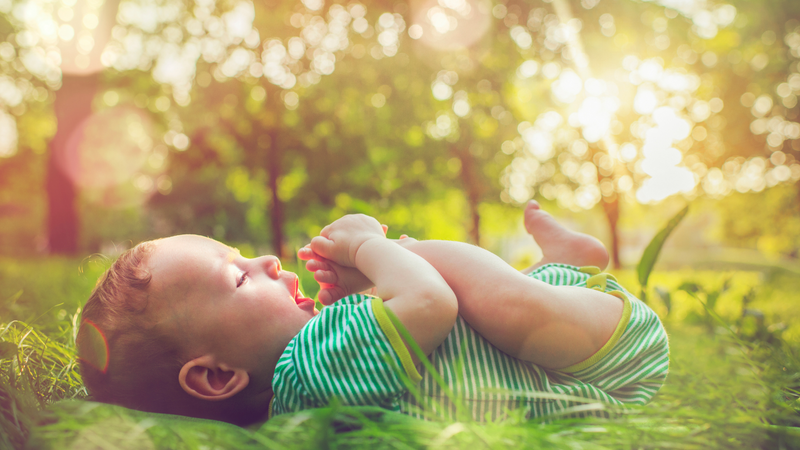Disposable diapers actually have a long and interesting history. From old parachutes to rubber bands, Once upon a time most diapers were made of fabrics like terry towel and muslin. Some parents also put a kind of rubber pants on top of the cloth diaper to prevent leakage. However, doctors later advised against this as the rubber seemed to lead to more rashes. Issues with the early varieties of cloth diapers continued because of ineffective methods for cleaning the diapers, and parents leaving babies in soiled diapers for prolonged periods, as they often didn’t have fresh diapers to put them in.
These challenges began to be addressed in the 1930s when Robinsons of Chesterfield released what they called "Destroyable Babies Napkins." But, the product was fairly ineffective. In 1944 the Swedish paper company Pauliström proposed the use of sheets of paper tissue inside the cloth diapers, but this resulted in mushy balls of paper.
Some success in inventing an effective cloth-and-disposable diaper hybrid came in 1947 when a Scottish woman,Valerie Hunter Gordon, created what she called a Paddi. The Paddi consisted of a disposable pad, made of cellulose wadding and cotton wool, worn inside an adjustable plastic garment, initially made out of old parachutes. Unfortunately, no manufacturers saw the appeal of this diaper, prompting Gordon to make over 400 with her sewing machine. Finally, in 1949 Robinsons of Chesterfield began producing the Paddi with much success. Around this time, Johnson & Johnson released a somewhat successful disposable diaper.
The diaper industry took a major turn after the Second World War when there was a cotton shortage, and thus, more of a demand for non-cloth diapers. There was also a desire for a diaper that wouldn’t increase a mother’s laundry load. To meet this need, Marion Donovan created a diaper composed of a plastic outer layer, made of shower curtain, and an inner layer of stacked tissue paper. Many companies also tried to invent a diaper that would meet this demand. Procter & Gamble succeeded with the release of Pampers in 1961. Kimberly-Clark then created Huggies, which prompted both companies to create more innovative designs that could lower costs and attract more customers.
Some of these innovations included a double layer of elastic in the leg of the diaper to create a snug fit, refastenable tapes, and the hourglass shape we now know that minimizes bulk and allows for better mobility. One of the most significant innovations came in 1981 when sodium polyacrylate, also called superabsorbent polymers (SAP), was developed and placed in disposable diapers which dramatically increased absorbency and reduced size.
Continued competition in the 80s and 90s led some companies to begin using synthetic fragrances in an attempt to mask the smell of a soiled diaper, cut corners on sustainability of materials, and add cheap lotions. Many also bleached the diapers with chlorine to create a white exterior, and often used potentially harmful dyes to print popular cartoon characters or bright designs on the diapers to appeal to more people. In addition, attempts to lower costs led to increased use of petrochemicals, phthalates, and other potential toxins.
Unfortunately, many of these “innovations” have led to babies developing uncomfortable skin reactions to many of the ingredients in their disposable diapers and we are still learning about the potential long-term dangers of these materials being placed near a baby's genitals all day and night. Luckily, there are more and more companies who see the need for disposable diapers that are not only effective, but safe and gentle on our babies as well as the earth. The result is diapers that are hypoallergenic, dermatologist tested, fragrance-free, totally chlorine free, and designed specifically for sensitive skin. They can also be naturally antibacterial, free of harmful chemicals, and use environmental protection water-based ink that won’t irritate a baby’s sensitive skin or pollute the soil.
In addition, eco-conscious diaper brands are also considering the health of our planet. As disposable diapers now account for about 50% of household waste for families using this type of diaper, it’s incredibly important to select eco-conscious diapers. This type of diaper often contains sustainable and biodegradable bamboo sheets, and comes in biodegradable or reusable packaging.
As disposable diaper use continues, we hope more companies shift towards the production of safer, more eco-conscious diapers, and consumers see the benefits of this type of product for their families. While these diapers sometimes come with a slightly increased cost, the benefits for the baby and the Earth are well worth it and savings can come in the form of subscription models that also take extra stress out of keeping a well stocked change table. We believe that by being mindful of what we use from the start, can dramatically shift and lessen our footprint to allow our babies and the earth to flourish for generations to come.



